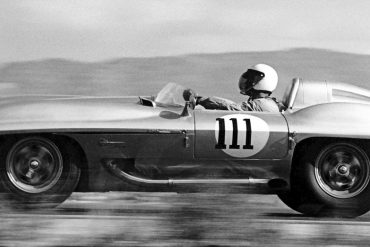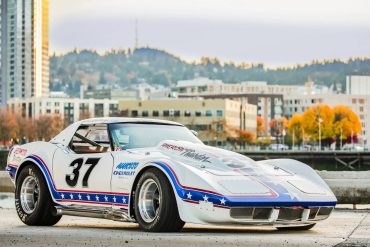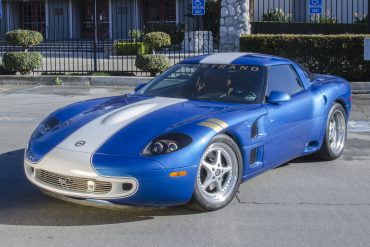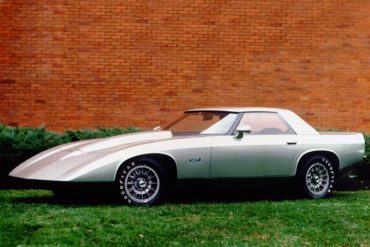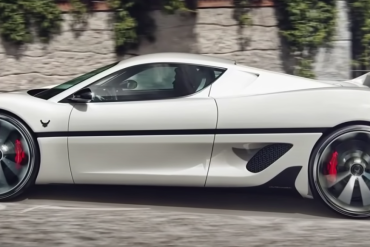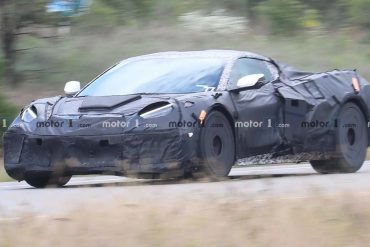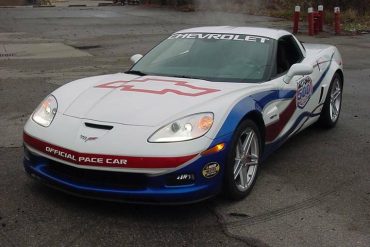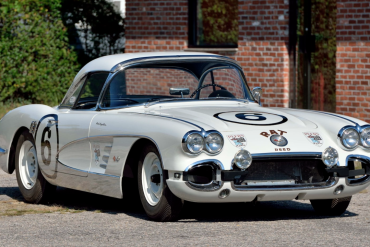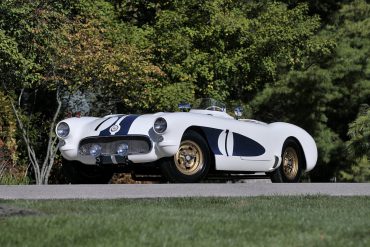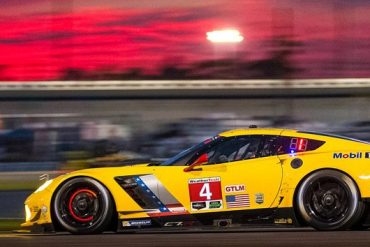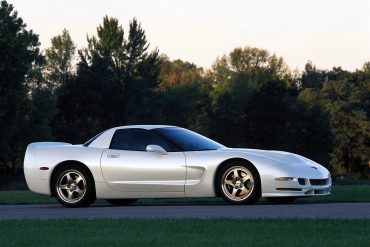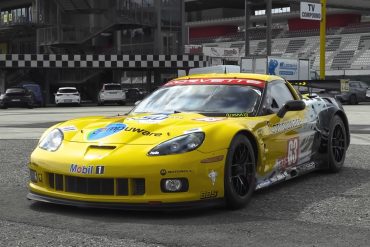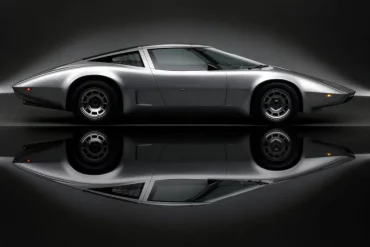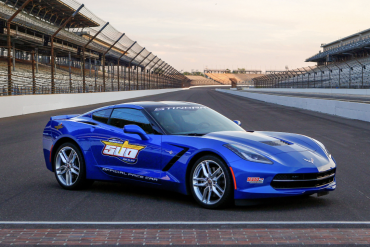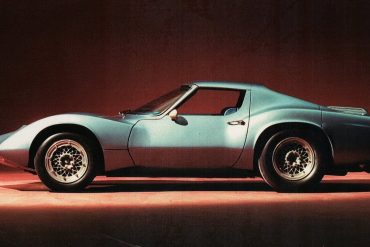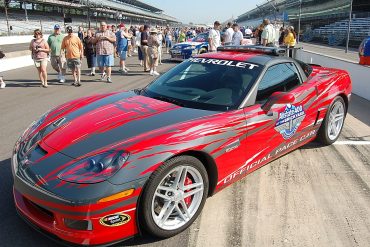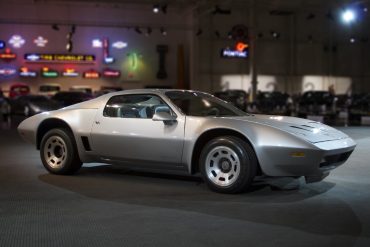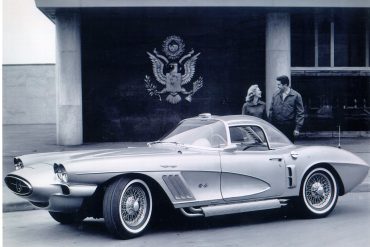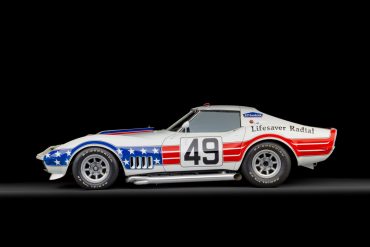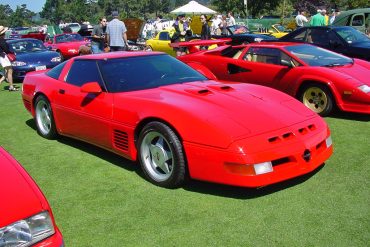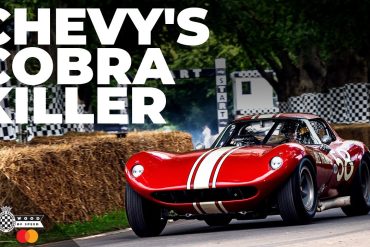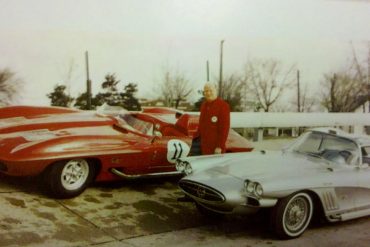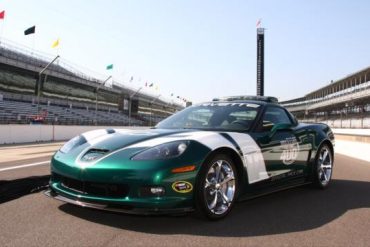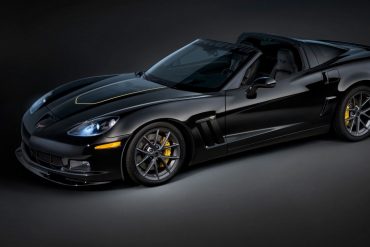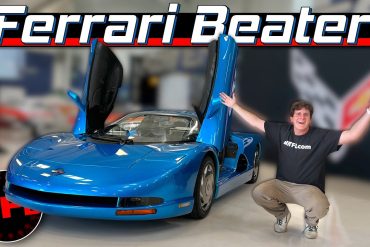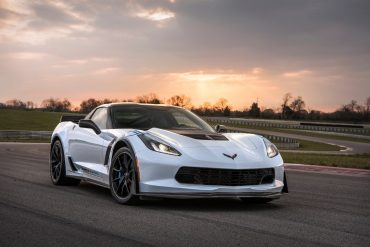In 1959, the bones of the SS were revived when Bill Mitchell secretly funded the Stingray race car. Mitchell purchased the chassis of the 1957 SS race car mule for $500 and had a design team create a new body. Mitchell felt the first generation Corvettes were too rounded and soft, so the Corvette Sting Ray Racer featured a sharper body edge that made it work.
John Greenwood, renowned as a master engine builder and race car driver, is credited with the creation of the “Greenwood...
As the story goes, when the Corvette ZR-1 came out in 1990, Dick Guldstrand saw an opportunity to create his vision of the perfect Grand Sport ride, instead of his name just getting slapped onto another Chevrolet product. He asked GM for fifteen ZR-1’s and some money. He got one car and permission to do whatever he wanted to do with it. And that’s exactly what he did. Called the "GS90", Dick's car would prove to be the most elaborate and expensive specialty Corvette ever built.
The 1973 Chevrolet XP-898 concept car was built with a frameless fiberglass foam sandwich body and chassis. This two-seater sports coupe offered a unique look at alternative engineering approaches to future techniques in design and manufacturing. The entire body consisted of four lightweight fiberglass outer body panels.
Sure we are only four years into the eighth-generation Corvette, but that doesn’t stop enthusiasts from talking and dreaming about...
As reported by Motor1, right on the heels of the announcement that the Corvette C8 Hybrid is coming as early...
NEXTEL Cup drivers Tony Raines and Jeff Green, along with hundreds of fans in Daytona Intemational Speedway's acclaimed NEXTEL FANZONE, got the first look at the 2007 Daytona 500 pace car with a special unveiling during the NASCAR Jackson Hewitt Preseason ‘Thunder Fan Fest. Corvettes were also used as Track cars and other support vehicles during the event activities at that years Daytona Speed Weeks. Corvettes were also used as Track cars and other support vehicles.
Known as the “Race Rat,” this rare 1960 Corvette is one of just 10 produced by the factory with the LPO (Limited Production Option) 1625A 24-gallon fuel tank designed by Zora Arkus-Duntov for racing purposes to reduce the frequency of pit stops. A true factory-prepared race car, this 1960 Chevrolet Corvette Tanker was ordered by gentleman racer and businessman George Reed of “Reed’s Race Rats” fame to compete in 1960 Sebring 12 Hours.
In 1956, Ed Cole, then General Manager of Chevrolet, decided Corvette could be saved from extinction due to lagging sales by promoting the car as a performance car which could be raced in production classes. The first of these Corvettes was to debut at Daytona Beach for acceleration and top end speed trials, the 12 hour race at Sebring, and also possibly Le Mans.
The C7.R Corvette by Pratt & Miller is one of the winningest race cars in modern history. Explore what makes this Corvette a winner on race day, and discover the connection between the C7.R and the seventh-generation Chevy Corvette Z06. At the core of the C7.R Corvette is a direct carry-over from its predecessor - the same 5.5 liter engine that was developed during the C6.R's successful tenure in both the American Le Mans series and at The 24 Hours of Le Mans.
"Hot" is an apt description of this special coupe's drivetrain. Its 6.6-liter engine produces 512 horsepower and 523 lbs.-ft. of torque. Mated to a four-speed automatic transmission and featuring a 3:41 geared limited slip differential and four-wheel independent suspension, this "Vette takes a backseat to no other vehicle. The White Shark Corvette also features power rack-and-pinion steering to precisely pilot this vehicle and four-wheel disc brakes with ABS.
The Corvette C6.R was introduced to the world in 2005, as both the motorsports testbed of the forthcoming C6 Z06 and C6 ZR1, and as...
In 1977, GM chairman Thomas Murphy gave the Aero-vette the green light. It was approved for production, and slated to be released in 1980. Despite being greenlit for 1980 production as the upcoming C4 Corvette, Arkus-Duntov's replacement Dave McLellan decided for a number of reasons (cost and tradition among them) to stick with the Corvette's tried and true front-engine configuration
The all-new, seventh-generation 2014 Corvette Stingray served as the Indianapolis 500 Pace Car, leading the field to green at the start of the 97th running of “The Greatest Spectacle in Racing,” on Sunday, May 26 2013. It marked a record 12th time the Corvette served as the Pace Car, starting in 1978. Jim Harbaugh, head coach of the NFL’s San Francisco 49ers, drove the all-new 2014 Chevrolet Corvette Stingray Pace Car
The XP-819, developed in the mid-1960s, was an engineering exercise to test a rear engine concept for the Corvette. The body was designed by Larry Shinoda. You can see styling cues in XP-819 that later appeared in Shinoda's famed "Sting Ray" design. A GM marine engine powers the car so the two-speed transaxle would operate properly. The entire chassis, suspension, and steering are custom made components unique to this car.
2009 marked the 16th time that Chevrolet has paced the Allstate 400 at the Brickyard and the fifth consecutive time Corvette has led the pack. Chevrolet's pacing tradition at the Indianapolis Motor Speedway also extends to the Indianapolis 500 where Chevrolet has paced that esteemed race 20 times with Corvette leading the field 10 times.
The XP-895 belonged to a series of experimental Corvettes constructed to experiment with different engine placements and chassis layouts. This...
One of many styling experiments built for day-to-day use by GM styling Chief Bill Mitchell, the XP-700 was built on...
The big news for 1986 was that a Corvette would pace the Indy 500 for the second time. Retired General Chuck Yeager was enjoying celebrity status as a result of the book and movie, “The Right Stuff.” But Chevrolet was still smarting from the heavy criticism over the ‘78 Corvette Pace Car debacle and decided that all 1986 Corvette convertibles were designated as “Pace Car Replica”.
When one of his cars was severely damaged in 1972, John Greenwood converted his 1969 L88 Convertible into a formidable race car. Included as the formidable ZL1 engine with 750 bhp on tap. Other modifications included a rear spoiler, quick replacement radiator and camber adjusters. At Le Mans, this car set the GT-class record for top speed down the Le Mans straight with 215 mph.
When Chevrolet changed gears to the LT1 engine, Callaway revealed their new SuperNatural line and the CR1 based on the ZR1’s LT5. Options for the CR1 included the radical Aerobody, German upholstery and special wheels, brakes and exhausts. The CR1 used a larger displacement to produce either 475 or 490 bhp.
The Cheetah was meant to be a Cobra-killer. It was Corvette powered, with a custom-designed chassis and suspension. There has...
Designed and built under the personal supervision of Bill Mitchell, the wild-looking XP-700 used many regular Corvette components (frame, chassis parts and engine). Bill Mitchell had a lot of “customs” built for himself. This XP-700 previewed the new tail of the upcoming 1961 Corvette.
Based on the Corvette Z06, this new GTR also represents a collaboration between Specter Werkes and Lingenfelter Performance Engineering, with a Lingenfelter twin-turbo system powering the car – and pumping its 7.0-liter LS7 engine to 800 horsepower. Featuring dramatic bodywork and carbon fiber details, the GTR blends racing-inspired design cues with uncompromising luxury and performance.
It was announced on July 23rd, 2010 that the 2010 NASCAR Brickyard 400 will be paced by this Green and White Corvette Grand Sport Coupe while Arctic White Corvette Grand Sport Convertibles wil serve as Festival (parade) cars. Camaro Coupes will also be used as support vehicles. The color is reminiscent of Bowling Green Metallic, last seen in 2001. This marked the 17th time that Chevy paced the Allstate 400 at the Brickyard.
The Corvette Jake Edition is a Grand Sport Coupe, with Z06 wheels featuring the Competition Gray finish. The matte Jake hood graphic from the GT1 commemorative model adds a subtle visual statement, while a host of other accessories round out the car’s unique appearance. Most of the parts added to this special Grand Sport are available today as Genuine Corvette Accessories or through any Chevrolet dealer’s parts department.
In January 1990, Chevrolet unveiled the CERV III (Chevrolet Engineering Research Vehicle No. 3) at the Detroit International Auto Show....
As the 2018 model year approaches, the Chevrolet Corvette is about to reach another important milestone – its 65th anniversary! The Corvette, which for the past six-plus decades has been recognized as the nation’s most popular sports car, made its debut in Flint, Michigan on June 30, 1953. To commemorate the car’s 65th anniversary milestone, Chevrolet is introducing the Corvette Carbon 65 Edition as an available option on the 2018 Grand Sport 3LT and Z06 3LZ models.
There were several successful attempts to build a convertible ZR-1, most of them by private people. The DR-1 was a GM prototype to test the structural integrity of the ZR-1 chassis when it would be topless. The car was built by American Sunroof Corporation (ASC) for Don Runkle, who was the vice-president of Advanced Engineering Staff, which explains the “DR-1” designation. It was a standard convertible transformed to ZR-1 specs.
Following its 2015 victories at the Daytona Rolex 24 and Sebring 12 Hours, Chevrolet introduced the 2016 Corvette Z06 C7.R...


